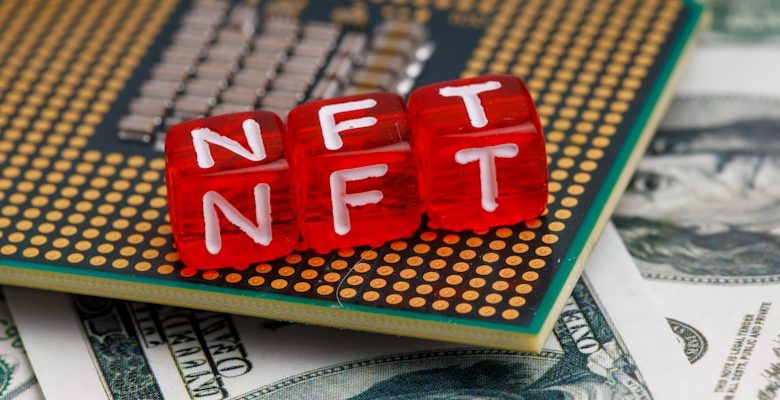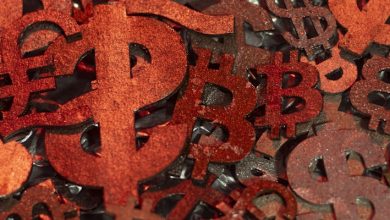How to Analyze the Tokenomics of NFT Projects

- Understanding the Basics of Tokenomics in NFT Projects
- Key Factors to Consider When Evaluating NFT Tokenomics
- Analyzing the Utility and Scarcity of NFT Tokens
- The Role of Governance and Community in NFT Tokenomics
- Evaluating the Token Distribution and Supply in NFT Projects
- Strategies for Assessing the Long-Term Viability of NFT Tokenomics
Understanding the Basics of Tokenomics in NFT Projects
Tokenomics is a crucial aspect of analyzing NFT projects as it determines the value and potential growth of the project. Understanding the basics of tokenomics can help investors make informed decisions when considering investing in an NFT project.
Tokenomics refers to the study of how tokens operate within a project’s ecosystem. This includes aspects such as token distribution, token utility, token supply, and token economics. By analyzing these factors, investors can gauge the viability of an NFT project and its long-term potential.
Token distribution is an essential component of tokenomics, as it determines how tokens are allocated among stakeholders. Factors to consider include the initial token allocation, vesting schedules, and token release mechanisms. A well-thought-out token distribution model can contribute to a project’s stability and sustainability.
Token utility is another critical aspect of tokenomics, as it outlines the various use cases for the token within the project ecosystem. This can include governance rights, staking rewards, utility within NFT marketplaces, or other functionalities that incentivize token holders to participate in the project.
Token supply refers to the total number of tokens that will ever be created within the project. Understanding the token supply can help investors assess the potential for token scarcity and its impact on token value over time. Projects with limited token supplies may have a higher potential for value appreciation.
Token economics involves analyzing how the token is designed to function within the project ecosystem. This includes factors such as inflationary or deflationary mechanisms, token burning, and other economic incentives that can affect the overall token value. By evaluating these tokenomic factors, investors can make more informed decisions about the potential growth of an NFT project.
Key Factors to Consider When Evaluating NFT Tokenomics
When evaluating the tokenomics of NFT projects, there are several key factors to consider that can help you make informed decisions.
One important factor to look at is the supply of the NFT tokens. Understanding how many tokens are in circulation and whether there is a cap on the total supply can give you insight into the potential scarcity of the tokens. Scarcity can drive up demand and increase the value of the NFTs over time.
Another factor to consider is the distribution of the tokens. Are the tokens being distributed fairly and transparently, or is there a risk of centralization? A fair distribution can help ensure that the project has a broad base of support and can reduce the risk of manipulation in the market.
Additionally, it’s important to look at the utility of the tokens. Do the tokens have a clear use case within the project, or are they simply being used as a means of speculation? Tokens that have real utility are more likely to hold their value over time and attract a strong community of users.
Finally, it’s essential to consider the governance structure of the project. Who has control over the decision-making process, and how are changes to the project’s protocol implemented? A transparent and decentralized governance structure can help ensure the long-term success and sustainability of the project.
By carefully evaluating these key factors, you can gain a better understanding of the tokenomics of NFT projects and make more informed investment decisions.
Analyzing the Utility and Scarcity of NFT Tokens
When analyzing the utility and scarcity of NFT tokens, it is crucial to consider how these factors can impact the overall value of a project. Utility refers to the usefulness or practicality of a token within a specific ecosystem, while scarcity pertains to the limited supply of tokens available. Understanding these concepts can provide valuable insights into the potential long-term viability of an NFT project.
Utility is a key driver of value for NFT tokens. Tokens that have a clear purpose or function within a digital marketplace, gaming platform, or decentralized application are more likely to attract users and investors. The more utility a token has, the more demand it is likely to generate, which can drive up its price. Therefore, it is essential to evaluate how well a project’s token aligns with its intended use case and whether there is a genuine need for it in the market.
Scarcity is another crucial factor to consider when analyzing NFT tokens. Limited token supply can create a sense of exclusivity and rarity, making the tokens more desirable to collectors and investors. Projects that implement mechanisms to control token issuance or create unique, one-of-a-kind NFTs can increase their scarcity and perceived value. By understanding the scarcity of a project’s tokens, investors can better assess their investment potential and potential for long-term growth.
Overall, a thorough analysis of the utility and scarcity of NFT tokens is essential for making informed investment decisions in the rapidly evolving world of blockchain technology. By considering these factors alongside other tokenomics metrics, investors can gain a comprehensive understanding of a project’s potential for success and value creation in the digital economy.
The Role of Governance and Community in NFT Tokenomics
The governance structure and community involvement play a crucial role in the tokenomics of NFT projects. Governance refers to the mechanisms and processes through which decisions are made in the project. This can include voting rights, proposal submission, and decision-making processes that impact the direction of the project. Community involvement, on the other hand, refers to the active participation of community members in the project’s development and decision-making processes.
When analyzing the tokenomics of an NFT project, it is important to consider how governance mechanisms are structured and how community involvement is encouraged. Projects that have transparent and decentralized governance structures tend to be more resilient and adaptable to changes in the market. Additionally, projects that prioritize community involvement often have a more engaged and committed user base, which can lead to a more sustainable project in the long run.
By actively participating in governance processes and engaging with the community, token holders can help shape the future of the project and ensure that their interests are represented. This can help build trust and confidence in the project, leading to increased adoption and value for the NFT token. Ultimately, strong governance and active community involvement can be key drivers of success for NFT projects in the ever-evolving blockchain ecosystem.
Evaluating the Token Distribution and Supply in NFT Projects
When evaluating the token distribution and supply of NFT projects, it is essential to consider how tokens are allocated and circulated within the ecosystem. This analysis can provide insights into the project’s sustainability and potential for growth. One key factor to assess is the initial token distribution, which should be fair and transparent to avoid centralization of ownership.
Additionally, examining the token supply is crucial in understanding the inflation rate and scarcity of the tokens. A high token supply could lead to devaluation, while a limited supply may drive up demand and value. It is important to strike a balance between the two to maintain a healthy token economy.
Furthermore, analyzing the token distribution among stakeholders such as developers, investors, and users can offer valuable insights into the project’s governance and community involvement. Projects that allocate tokens to incentivize participation and contribution tend to have more engaged communities and sustainable growth prospects.
Overall, evaluating the token distribution and supply in NFT projects is a critical step in assessing the project’s long-term viability and potential for success. By understanding how tokens are distributed and circulated, investors can make more informed decisions and support projects with strong tokenomics fundamentals.
Strategies for Assessing the Long-Term Viability of NFT Tokenomics
One key aspect to consider when evaluating the tokenomics of NFT projects is the long-term viability of the project. It is crucial to assess whether the NFT tokenomics model is sustainable over time and can adapt to changing market conditions. Here are some strategies to help you analyze the long-term viability of NFT tokenomics:
- 1. **Market Demand:** Evaluate the current and potential future demand for the NFTs offered by the project. Consider factors such as the uniqueness of the NFTs, the target audience, and trends in the NFT market.
- 2. **Utility of the Token:** Assess the utility of the project’s native token within its ecosystem. Determine whether the token serves a clear purpose, such as access to exclusive content, governance rights, or rewards.
- 3. **Economic Model:** Examine the token distribution, inflation rate, and tokenomics design. Look for a balanced economic model that incentivizes participation and value creation while avoiding hyperinflation or deflation.
- 4. **Team and Partnerships:** Research the project’s team members, advisors, and partnerships. A strong team with relevant experience and a network of strategic partners can enhance the project’s long-term prospects.
- 5. **Community Engagement:** Evaluate the level of community engagement and support for the project. A vibrant and active community can contribute to the project’s sustainability and growth over time.
By considering these strategies and conducting a thorough analysis of the long-term viability of NFT tokenomics, you can make more informed investment decisions and identify projects with strong potential for success in the evolving NFT market.



